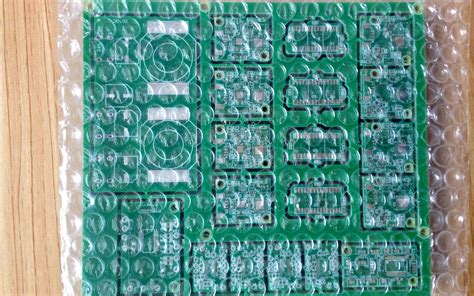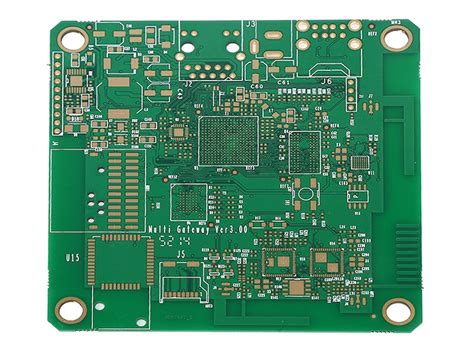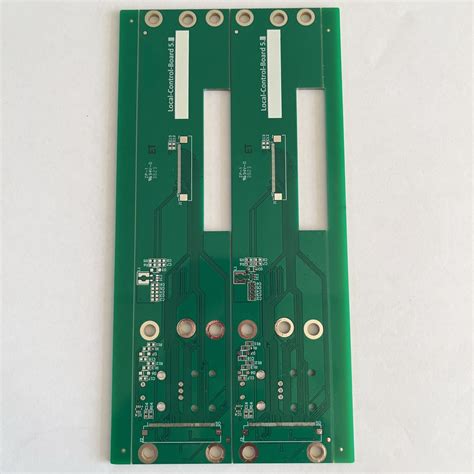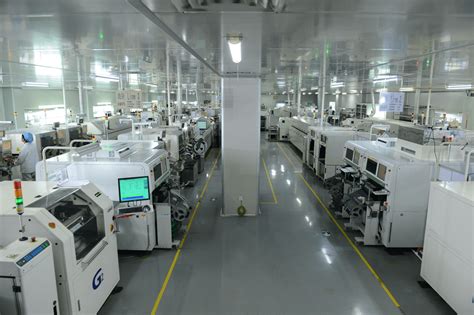Choosing the Right 4 Layer PCB Prototype for Your Projects
Key Takeaways
When selecting a 4 layer PCB prototype, it’s essential to understand the pcb manufacturing process to ensure that you receive a product that meets your specific needs. Start by evaluating potential pcb manufacturing companies based on their expertise and equipment quality. The pcb manufacturing cost can vary significantly depending on the complexity of your design and the materials used, so it’s crucial to compare quotes from different suppliers. Ensure you inquire about the lead time, as this can affect your project timelines. A reputable pcb manufacturing business not only provides competitive pricing but also emphasizes quality assurance and support throughout the prototyping phase. By doing thorough research and asking the right questions, you can optimize both the performance and reliability of your 4 layer PCB prototypes, setting a solid foundation for your projects.
Choosing the Right Manufacturing Process for 4 Layer PCBs
When selecting a 4 layer PCB prototype, choosing the right pcb manufacturing process is crucial to ensuring that your design functions as intended. There are several methods available, and understanding these can save you time and money. First, consider the pcb manufacturing cost associated with each process. Different manufacturing techniques come with varying price points; thus, finding a balance between your budget and quality is essential.
Next, research reliable pcb manufacturing companies that specialize in advanced multilayer boards. Not all manufacturers offer the same level of expertise or equipment for handling designs with intricate routing and connections, so ensure you partner with one that understands the unique demands of 4 layer PCBs.
Moreover, think about turnaround times for production and delivery. “A well-structured timeline can prevent significant project delays,” as timely delivery is essential in today’s fast-paced market. Evaluate your project’s timeline against potential manufacturers’ capacity to meet deadlines to avoid inconveniences later.
The material choice also plays a vital role in your prototypes’ performance. Different manufacturing processes use various substrates and copper thicknesses that impact electrical performance and durability. Therefore, selecting materials carefully based on your project specifications can significantly influence results.
In summary, consciously navigating through these aspects of pcb manufacturing will position you to make informed decisions that enhance the quality of your 4 layer prototypes while optimizing resources effectively.
Essential Design Considerations for 4 Layer PCB Prototypes
When venturing into 4 layer PCB prototypes, you must keep several design considerations at the forefront to ensure optimal performance and reliability. First and foremost, consider the layer stacking configuration, which affects how signals travel through your PCB. A common layout is to place power and ground planes on the outer layers for better electrical performance. Furthermore, ensuring adequate signal integrity should be a critical focus; this involves using proper routing techniques and maintaining controlled impedance to minimize noise and interference.
As you evaluate different PCB manufacturing companies, check their capabilities for handling complex designs, as some may specialize in specific requirements that align with your project’s needs. Understanding the PCB manufacturing cost is also essential; be certain to balance quality with budget constraints. The material selection directly influences both performance and costs; materials such as FR-4 are widely used but consider other options like Rogers or Polyimide if your application demands superior thermal properties.
Additionally, pay attention to the spacing between conductors within layers to comply with manufacturing tolerances; this can significantly impact the success of your prototype. Overall, leveraging knowledge of these design aspects will enhance your projects while establishing a solid foundation for working with various PCB manufacturing businesses in producing reliable prototypes tailored to your specific requirements.

Understanding Blind Vias and Their Importance in PCB Design
In the realm of 4 layer PCB prototypes, understanding blind vias is essential for achieving optimal design efficiency and functionality. Blind vias are vias that connect internal layers of the PCB to an outer layer, but do not pass all the way through. This feature allows for more compact layer arrangements, which is crucial when you are limited in space. When you’re working on your projects, considering the use of blind vias can reduce the pcb manufacturing cost by minimizing the number of required layers and enabling a more simplified layout.
When evaluating pcb manufacturing companies, look for those that specialize in advanced technologies, as they typically offer services tailored to incorporate blind vias effectively. Such companies are equipped to meet complex design needs while ensuring reliable product outcomes. To illustrate, here’s a brief comparison table that outlines the advantages of using blind vias in your designs:
| Feature | Single Through-hole | Blind Vias |
|---|---|---|
| Layer Interconnection | Limited | Flexible |
| Design Complexity | Higher | Lower |
| Space Efficiency | Poor | Excellent |
| Manufacturing Time | Longer | Shorter |
In summary, incorporating blind vias in your designs not only enhances space utilization but can also contribute to lowering overall pcb manufacturing costs while ensuring a high-quality result. Choosing a reputable pcb manufacturing business that understands these intricacies will greatly benefit your project’s success. Whether you’re innovating new electronics or prototyping existing concepts, prioritizing these design considerations will provide you with a distinct advantage in achieving functional and effective products. Consider exploring resources from established suppliers for more insights on how these decision-making elements can improve your prototype outcomes; you might start with Andwin PCB.

Comparing Suppliers for Quality 4 Layer PCB Production
When it comes to 4 layer PCB prototype production, selecting the right supplier is crucial to ensuring high-quality PCB manufacturing. You should start by researching various PCB manufacturing companies that specialize in multilayer boards. Look for firms with a proven track record in delivering 4 layer PCBs, as their experience can greatly affect the reliability of your prototypes. Consider requesting samples to evaluate their craftsmanship and adherence to specifications. It’s also essential to compare the pcb manufacturing cost among suppliers, as this will impact your overall project budget. Don’t forget to assess their customer support and turnaround times, as timely communication can streamline your development process. Lastly, ensure that the supplier has up-to-date certifications and follows industry standards, which is an indicator of a reputable pcb manufacturing business. By carefully analyzing these factors, you can find a supplier that meets your project’s needs while maintaining high quality in production.

Budgeting Tips for Cost-Effective 4 Layer Prototype Manufacturing
When navigating the world of 4 layer PCB prototype manufacturing, understanding the pcb manufacturing cost is crucial for keeping your project within budget. Start by identifying your project requirements and evaluating the complexities of your design. This approach helps you avoid unnecessary expenses associated with overly complex prototypes. It’s also wise to request quotes from multiple pcb manufacturing companies to gain insight into price variations; doing so gives you leverage during negotiations. Furthermore, consider selecting a pcb manufacturing business that offers flexible payment plans or bulk pricing discounts. These options can significantly reduce costs, especially if you’re working on multiple prototypes simultaneously. Being transparent about your budget and asking for recommendations can lead you to reliable suppliers who not only understand your financial limits but also offer quality service. Lastly, always keep an eye on hidden costs associated with materials or last-minute design changes to ensure that your 4 layer PCB prototype fits seamlessly into your overall project budget without compromising quality or functionality.
Evaluating Turnaround Times: When to Expect Your PCBs
When it comes to pcb manufacturing, understanding turnaround times is crucial for your project planning. Various factors influence these times, including the complexity of your design and the specific pcb manufacturing process employed. Typically, for 4 layer PCB prototypes, you might expect a standard turnaround of anywhere from one to three weeks. However, this can vary significantly based on the pcb manufacturing companies you choose and their production capabilities. It’s important to communicate your deadlines clearly when you reach out to suppliers; this will help ensure that they can accommodate your timeline, especially during peak production periods. Additionally, consider working with manufacturers who offer expedited services if time is of the essence; just be aware that this may increase your overall pcb manufacturing cost. A proactive approach in discussing lead times can provide a smoother experience, keeping your pcb manufacturing business on track and ensuring that you get your prototypes when you need them most.

Common Mistakes to Avoid in 4 Layer PCB Prototyping
When embarking on your 4 layer PCB prototyping journey, avoiding common pitfalls can save you time and money. One critical mistake is neglecting to thoroughly research pcb manufacturing options. Choosing the wrong pcb manufacturing company can lead to subpar results that do not meet your specifications. Additionally, overlooking the importance of blind vias during the design phase can complicate your layout, causing potential signal integrity issues later on. Be wary of not budgeting appropriately for the overall pcb manufacturing cost; having a clear financial plan will prevent unexpected expenses that could derail your project. Another frequent blunder is disregarding turnaround times; always communicate with your chosen pcb manufacturing business to set realistic expectations for when you will receive your prototypes. Finally, remember to scrutinize the materials utilized in your PCBs; substandard materials can adversely affect performance and durability. By steering clear of these common mistakes, you will position yourself for success in developing high-quality prototypes that align with your project goals.
Enhancing Performance with Proper Material Selection for PCBs
Selecting the right materials for your 4 layer PCB prototypes can significantly impact performance, reliability, and overall success in your projects. When engaging in PCB manufacturing, consider the dielectric constant and thermal conductivity of the materials. High-frequency applications benefit from materials with low dielectric constants, allowing for better signal integrity. On the other hand, if your design requires a high thermal dissipation, you should look toward materials specifically engineered for thermal management. Additionally, different PCB manufacturing companies may offer various laminate options that can enhance specific properties such as rigidity and thermal resistance. As you evaluate your options, don’t forget to assess how the choice of materials influences the PCB manufacturing cost; higher-grade materials often entail increased expenses but can lead to enhanced product performance and longevity. With a keen eye on selecting appropriate substrates and additional layers, you can elevate your PCB manufacturing business to meet stringent standards and satisfy evolving market demands.
Conclusion
When embarking on your journey into 4 layer PCB prototyping, it’s paramount to grasp the nuances of PCB manufacturing to ensure your projects meet the highest standards of quality and functionality. You might find that understanding the PCB manufacturing cost plays a crucial role in your budgeting process, allowing you to allocate resources wisely without compromising on key features. Additionally, evaluating various PCB manufacturing companies can provide you with insights into their reliability and expertise, helping you make informed decisions about who to partner with for your needs. Remember, not all PCB manufacturing businesses are created equal; some may offer superior customer service or faster turnaround times. By paying attention to these factors, you’re more likely to secure a prototype that aligns with your requirements and expectations. When you invest time in selecting the right partners and processes, you’ll find that your PCB prototypes not only perform well but also pave the way for greater innovation in your projects.
FAQs
What are the common design considerations for a 4 layer PCB prototype?
When designing a 4 layer PCB prototype, consider factors such as the layer stack-up, the placement of components, and the routing strategy. This ensures effective signal integrity and minimizes interference.
How should I choose among various PCB manufacturing companies?
Evaluate PCB manufacturing companies based on their reputation, customer reviews, and ability to meet your specific project needs. Look for experience in 4 layer prototypes, as this enhances your chances of obtaining high-quality boards.
What is the typical PCB manufacturing cost for a 4 layer prototype?
The PCB manufacturing cost varies based on complexity, size, materials used, and quantity ordered. It’s essential to obtain detailed quotes from multiple suppliers to compare costs effectively.
How can I improve my experience with a PCB manufacturing business?
To improve your experience with a PCB manufacturing business, ensure clear communication regarding your requirements and deadlines. Providing detailed designs and specifications will help avoid misunderstandings and enable better results.
What are some common mistakes to avoid during PCB prototyping?
Common mistakes include underestimating component sizes, neglecting thermal management issues, and inadequate testing before production. These errors can lead to costly revisions later in the process.







